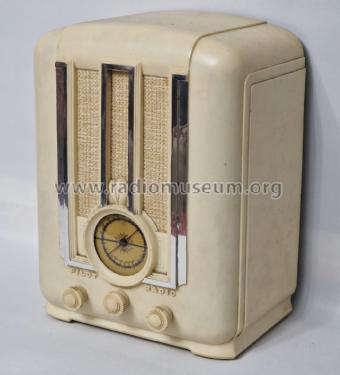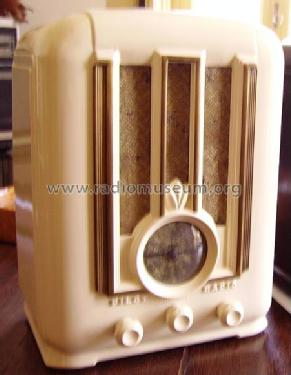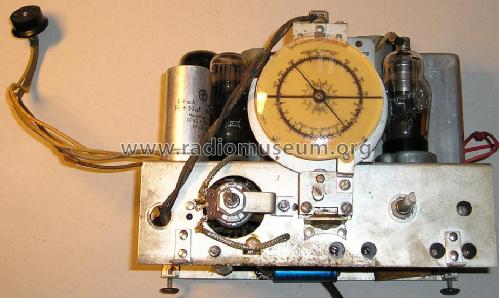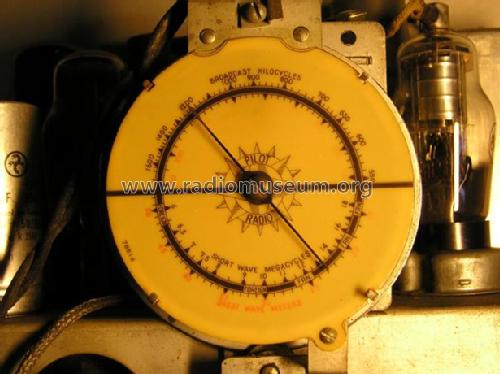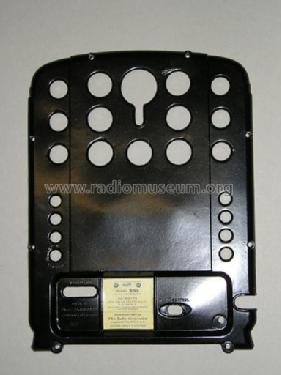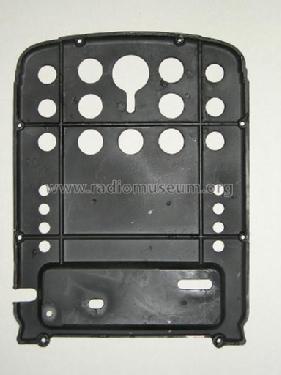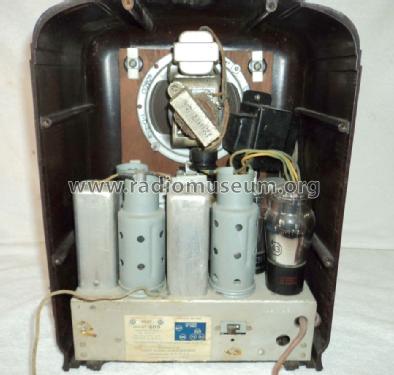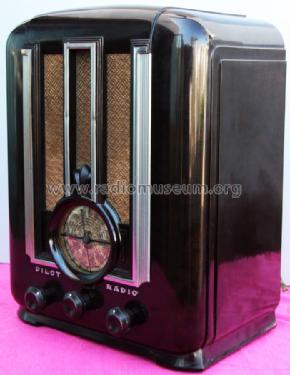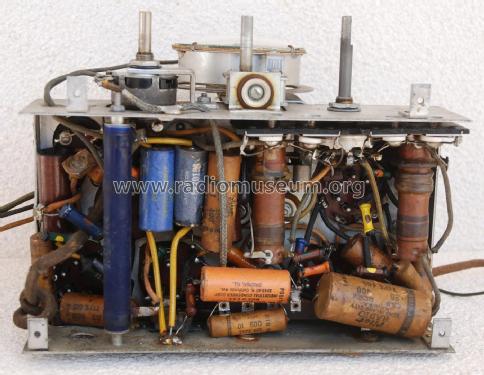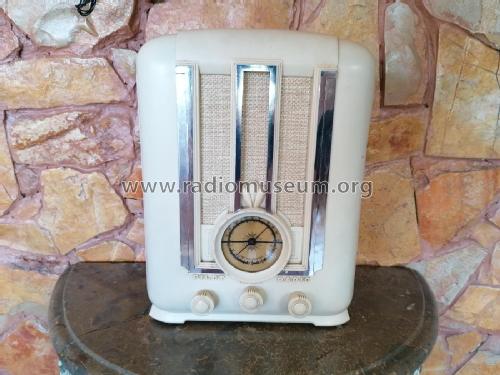- País
- Estados Unidos
- Fabricante / Marca
- Pilot Electric Mfg. Co. (Radio Corp.); Brooklyn (NY)
- Año
- 1936
- Categoría
- Radio - o Sintonizador pasado WW2
- Radiomuseum.org ID
- 112982
-
- alternative name: Pilot Radio & Television || Pilot Radio and Tube || Pilot Radio Corporation
Haga clic en la miniatura esquemática para solicitarlo como documento gratuito.
- Numero de valvulas
- 5
- Principio principal
- Superheterodino en general; ZF/IF 456 kHz
- Gama de ondas
- OM y OC
- Tensión de funcionamiento
- Red: Aparato AC/DC. / 115 Volt
- Altavoz
- Altavoz electrodinámico (bobina de campo) / Ø 5 inch = 12.7 cm
- Potencia de salida
- 1 W (unknown quality)
- Material
- Bakelita
- de Radiomuseum.org
- Modelo: 203 [75 tube] - Pilot Electric Mfg. Co. Radio
- Forma
- Sobremesa alto decorativa, similar a Capilla pero cuadrado (Tombstone, can have rounded edges).
- Ancho, altura, profundidad
- 9.3 x 12.6 x 7.1 inch / 236 x 320 x 180 mm
- Anotaciones
- The dial does not bear stationized call letters. Chrome trim around the speaker grille. There is also model 203 using a 76 tube and other X203 models.
- Procedencia de los datos
- -- Collector info (Sammler)
- Referencia esquema
- Rider's Perpetual, Volume 18 = 1949 and before
- Mencionado en
- Machine Age to Jet Age II
- Documentación / Esquemas (1)
- Autor
- Modelo creado por Konrad Birkner † 12.08.2014. Ver en "Modificar Ficha" los participantes posteriores.
- Otros modelos
-
Donde encontrará 544 modelos, 271 con imágenes y 408 con esquemas.
Ir al listado general de Pilot Electric Mfg. Co. (Radio Corp.); Brooklyn (NY)
Colecciones
El modelo 203 es parte de las colecciones de los siguientes miembros.
Contribuciones en el Foro acerca de este modelo: Pilot Electric Mfg.: 203
Hilos: 4 | Mensajes: 14
I do not know who to whom I should raise this issue, therefore I apologige for my in advance this.
I do not understand what the reason for the existence of this sheet scheme to which the audio output tube is a 25L6, having all these radios, (photos), the audio output tube in tube they all a 43?
Thank's
A good 2014
Best regards
Júlio Branco
Júlio Branco, 10.Jan.14
Dear All,
In Classic Gallery I found some more information about Pilot 203.
Classic Gallery says that Pilot X203 is the original one. At the beginning this model had no chrome trims (friezes). http://classicradiogallery.com/radiopages/pilotx203.html
About Pilot 203, Classic Gallery says that it is an export model which has no stationized call letters and has different knobs.http://classicradiogallery.com/radiopages/pilot203.html
I think that, at last, these two differences are enough to identify these two different models
I hope this information can help.
Best Regards
Mário Coelho
Mario Coelho, 03.Sep.07
To use early and late would not help. A collector looking for info in RM would never find such a hint on his radio. In our case here the tubes are unambiguous means to discriminate.
In addition "early" and "late" as found in some Sylvania Service notes are in doubt insofar, as both versions are noted for the same year 1936 (Riders vs. Machine Age).
Konrad Birkner † 12.08.2014, 19.May.07
Dear Radio Friends,
Our continuous team search work in order to find out the reasons of some discrepancies brought us out some good news about those two different Pilot 203 versions named by Rmorg :"Pilot 75 tube" & "Pilot 76 tube".
Yesterday, José Duarte Costa shows me a book: "Tube Complement Book with IF-Peaks" From Sylvania. 1938-1939.
Here is a piece of it:

This book also consider two variants of this Pilot 203.
But, it calls them differently. It call them "Early" and “Late”.
It means that these two versions had a chronologic manufacturing sequence. It was not an error of manufacturing or a temporary 76 tube stock break...
First, Pilot manufacturer produced an Early Pilot 203 . Afterwards Pilot produced a Later Pilot 203. Tube series were different.
Why not us,to call these model variants ”Early" and "Later" too, instead of 76 and 75?
Do You agree?
Best Regards
Mário Coelho
Mario Coelho, 17.May.07


